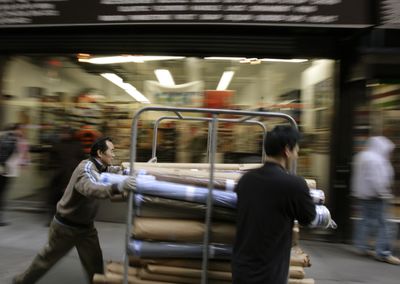Retailers are on edge over lender CIT’s fate
Short-term financing keeps their products moving

NEW YORK – The possible collapse of a key lender is sending panic through the retail industry, threatening to hang up deliveries of back-to-school clothing and other merchandise and throw holiday ordering into disarray.
A bankruptcy filing by CIT Group would hurl more trouble at an industry already hammered by the worst spending slump in decades.
The ripple effect could be as simple as a zipper maker that can’t rely on CIT to advance payment for orders. That would then hurt trucking companies that would ship the zippers and overseas factories that need the zippers to make dresses. The result could be mounds of zipperless dresses at factories, piles of goods sitting on docks – and products not making it to store shelves.
“CIT is like an octopus, with its tentacles that reach out to so many industries and sub-industries,” said Jeffrey Knopman, a principal at Profit Solutions Group, which helps suppliers recover chargeback money from merchants.
A primary business of CIT is short-term financing, mostly to small- to medium-size businesses that can’t afford to wait the 60 to 90 days it takes to get paid for shipments to retailers.
This business, known as “factoring,” also guarantees that suppliers get paid by the merchants. Without that guarantee, suppliers would have to ship goods at their own risk.
As the prospect of a CIT bankruptcy filing loomed, industry trade groups increased their pitch to lawmakers to prevent the collapse of CIT, which they say would imperil their small-business members and derail the already fragile economy. “This is a potential crisis for Main Street,” said Kevin Burke, president and chief executive of the American Apparel and Footwear Association. “The industry is already battling less inventory and battling a recession. If you can’t get the product, how do you get consumers into the store?”
Bud Konheim, president of designer dress firm Nicole Miller, said any disruption in manufacturing caused by a lack of financing could shut down the pipeline for new goods. His company depends on CIT to finance its fabrics.
“Everybody is frantically thinking about what could happen,” Konheim said. “CIT reaches everybody in the business, from the fabric guy to the zipper guy. If we can’t get the zippers, we can’t make the item. One little thing can stop the whole process.”
New York-based CIT serves as factor to about 2,000 vendors that supply merchandise to 300,000 stores, according to Craig Shearman, spokesman at the National Retail Federation. Analysts say 60 percent of the apparel industry depends on CIT for financing, so other lenders taking up all the slack would pose a big financial strain.